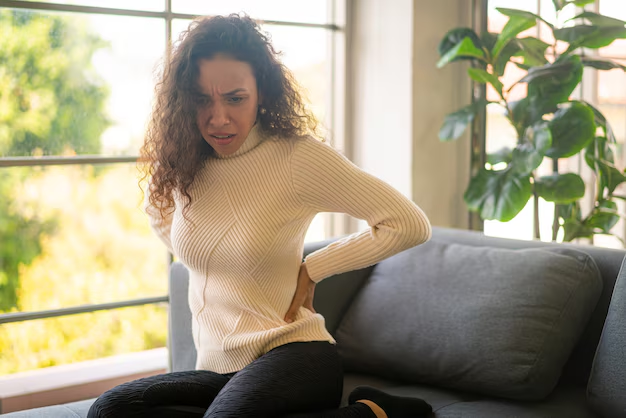Understanding Scoliosis: Can it Cause Back Pain?
Have you ever wondered if scoliosis is behind those persistent backaches? You’re not alone. Many people with scoliosis – a condition where the spine curves sideways – ask the same question. Despite its prevalence, scoliosis is shrouded in mystery, causing anxiety for those who face it. This article dives deep into the relationship between scoliosis and back pain, exploring the causes, misconceptions, and ways to manage the discomfort.
What Exactly is Scoliosis?
Scoliosis is a spinal condition characterized by a lateral, often S-shaped, curve in the spine. It can occur at any age but is most commonly detected during adolescence. While scoliosis affects about 2-3% of the population, not everyone experiences pain due to this condition.
Types of Scoliosis:
- Idiopathic Scoliosis: The most common type, with no known cause.
- Congenital Scoliosis: Resulting from spinal abnormalities at birth.
- Neuromuscular Scoliosis: Due to disorders like cerebral palsy or muscular dystrophy.
Scoliosis can vary significantly in severity, influencing whether symptoms like back pain occur.
The Connection Between Scoliosis and Back Pain
Does scoliosis cause back pain? The answer can be as complex as the condition itself. Not all scoliosis leads to back pain, but some individuals may experience discomfort due to the changes in spinal alignment.
How Scoliosis Might Cause Pain
Muscular Imbalance: The curvature may cause muscles on one side of the spine to be overused, leading to fatigue and pain.
Vertebral Stress: Uneven distribution of body weight can lead to increased pressure on vertebrae, potentially causing inflammation and discomfort.
Nerve Compression: Severe curvatures can compress spinal nerves, sometimes resulting in pain that radiates down the back and legs.
Postural Changes: Altered posture might contribute to pain, especially if the condition progresses without management.
Myths and Misconceptions
There are many myths around scoliosis and pain. It's crucial to separate fact from fiction for a clearer understanding:
Myth: All scoliosis patients experience severe pain.
Fact: Many individuals with scoliosis, especially those with mild curves, never experience significant discomfort.
Myth: Pain is an indicator of scoliosis severity.
Fact: Scoliosis severity doesn’t always correlate with pain levels.
Diagnosing Scoliosis-Related Pain
If you suspect scoliosis is causing your back pain, it's essential to consult with a healthcare professional. Here’s what the diagnostic process typically involves:
Medical History and Physical Examination
A doctor will first inquire about your medical history and conduct a physical exam to check for asymmetries in the spine and posture.
Imaging Tests
X-rays are often used to measure spinal curvature and determine its severity. In some cases, MRIs might be warranted to assess nerve involvement.
Managing Scoliosis and Alleviating Pain
There isn’t a one-size-fits-all approach to managing scoliosis-related back pain. Instead, treatment is usually tailored based on the individual's symptoms and the curve's severity.
Non-Surgical Treatments
Physical Therapy: Exercises designed to strengthen back muscles and improve posture can help alleviate discomfort.
Bracing: For those with moderate curves, wearing a brace can prevent curve progression, especially in adolescents who are still growing.
Pain Management: Nonsteroidal anti-inflammatory drugs (NSAIDs) can ease pain and reduce inflammation.
Lifestyle Modifications
Posture Awareness: Maintaining good posture, whether sitting or standing, can minimize strain on the back.
Regular Exercise: Activities like swimming or yoga can enhance flexibility and strengthen the core muscles, supporting spinal health.
Surgical Options
In severe cases where the curve progresses or causes significant pain, surgical intervention might be considered. Spinal fusion is a common surgical procedure that aims to correct and stabilize the spine.
Related Conditions and Concerns
Back pain, especially without a clear cause, might result from various underlying conditions. Here are a few:
Degenerative Disc Disease: Often presents similarly to scoliosis, causing back pain due to disc deterioration.
Sciatica: Compression of the sciatic nerve can cause radiating pain down the leg, sometimes mistaken for scoliosis-related pain.
Empowering Individuals with Knowledge
Understanding scoliosis and its implications can empower individuals to make informed decisions. If you're living with scoliosis, knowledge is your best tool for navigating daily life and managing any associated pain.
Final Insights
Although scoliosis might cause back pain for some, many individuals lead active, pain-free lives. By staying informed and proactive, you can better manage your spinal health and maintain a high quality of life.
Quick Tips for Managing Scoliosis
- 🏃♀️ Stay Active: Engage in regular low-impact exercises to maintain spinal health.
- 🛌 Focus on Posture: Practice good posture to reduce back strain.
- 🤝 Consult Professionals: Regular check-ups can monitor scoliosis progression and address pain effectively.
- ✌️ Embrace Support: Seek out support groups or therapy to connect with others navigating similar challenges.
Remember, while scoliosis can be a lifelong condition, it doesn’t have to dictate your quality of life. Understanding your body and working alongside healthcare professionals can make a world of difference.
